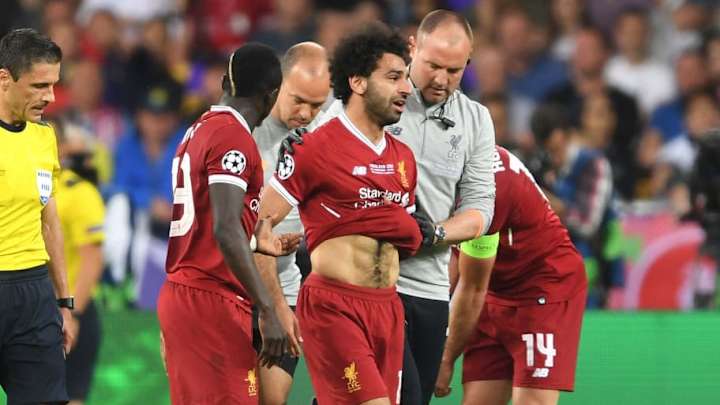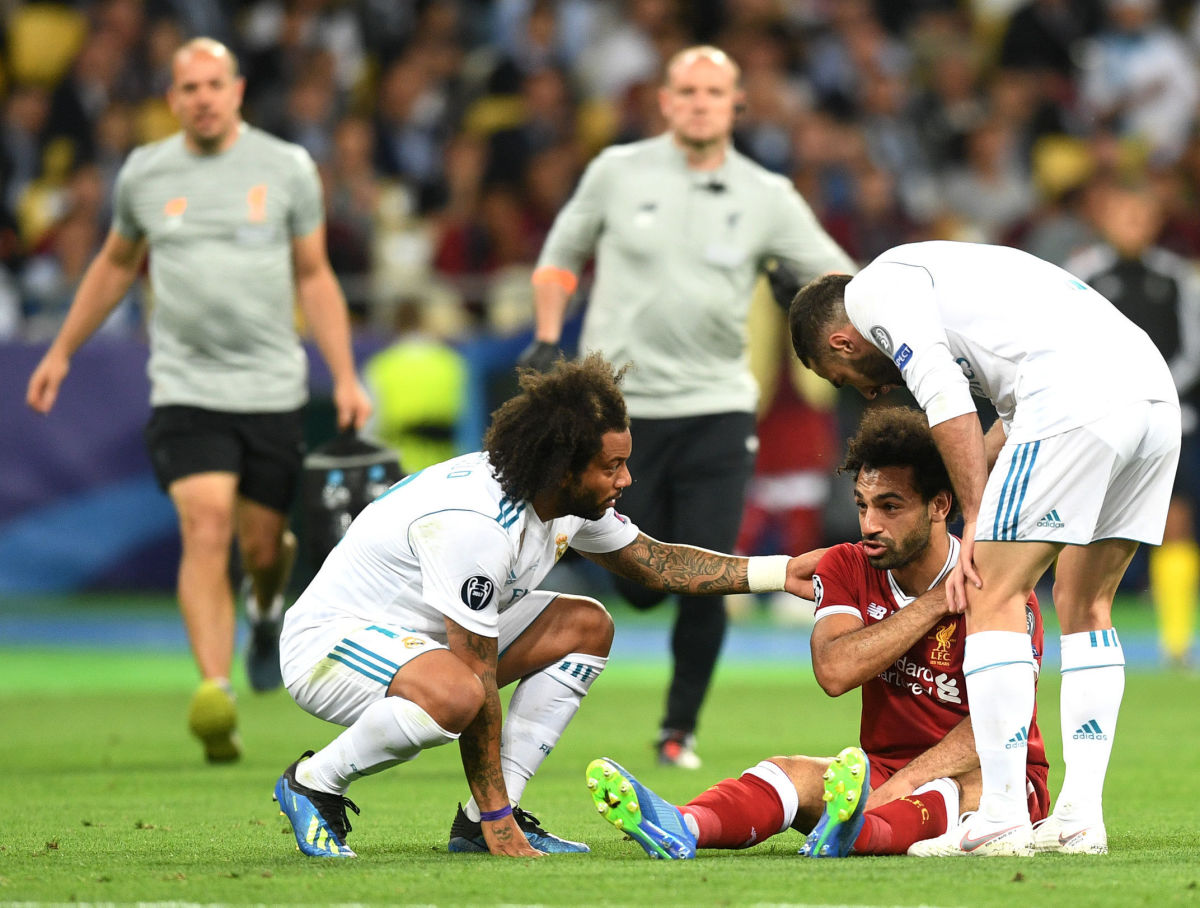Injury Analysis: Everything You Need to Know About Salah’s Suspected Shoulder Injury in 1 Minute

Liverpool, Egypt and football fans in general were heartbroken at the sight of a tearful Salah being helped off the Champions League final during the first half, after a challenge from Sergio Ramos. He deserved better.
The Premier League Golden Boot winner took a blow to the shoulder, as Liverpool eventually fell to a 3-1 defeat, and has been reported to have a posterior shoulder dislocation.
Here’s everything you need to know about posterior shoulder dislocations.
Traumatic shoulder dislocations are broadly classified into anterior ones and posterior ones. Although TV footage is inaccurate for diagnosis, a direct anterior blow to Salah’s shoulder may suggest a posterior shoulder dislocation (although anterior dislocations are more common).

Anatomy:
The posterior shoulder is stabilised by the gleno-humeral joint’s bones/labrum/capsule as well as the subscapularis muscle/tendon and several ligaments (IGHL, SGHL, CHL).
Diagnosis:
One major piece of information required is if this has been a one-off event or if he has suffered repeated dislocations.
Recurrent/chronic dislocations are common in the weight room and with overhead athletes; it signifies pre-existing posterior weakness (such as joint labral tear, torn or lax ligaments). Some people have such loose joints that they can voluntarily dislocate and relocate their shoulder.
Just a Sprain: Liverpool Star Salah's Chances of Making World Cup Boosted After Egyptian FA... @aboonwithaview https://t.co/wUFkVBzWDs
— The GegenPress (@GegenPressPod) May 27, 2018
Another important piece of information is the presence/absence of large bony defects, which occur when the 2 bones crash towards each other resulting in a defect at the humerus or the glenoid (posterior bankart lesions or reverse hill-sach lesions); large bony defects often require surgery.
Treatment:
If what we hear is correct, Mo Salah might have mostly a soft tissue injury.
His shoulder should be immobilised in a slightly externally rotated position and undergo a short period of physiotherapy with rotator cuff strengthening and peri-scapular stabilisation exercises.
If all goes well, he might be able to return in 4-6 weeks for football’s biggest stage. However, whether he makes it back for the World Cup remains to be seen.
